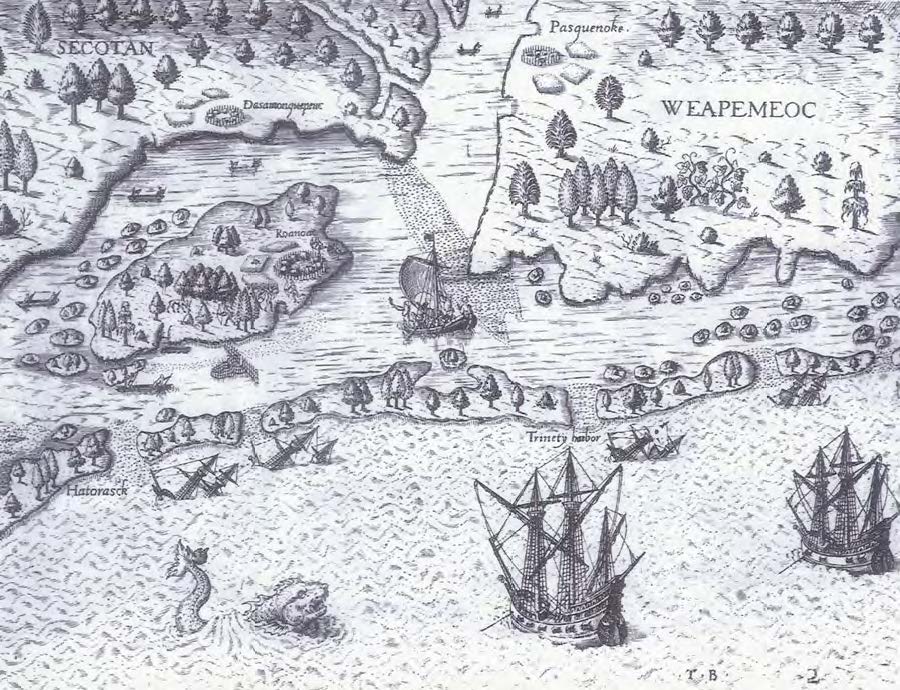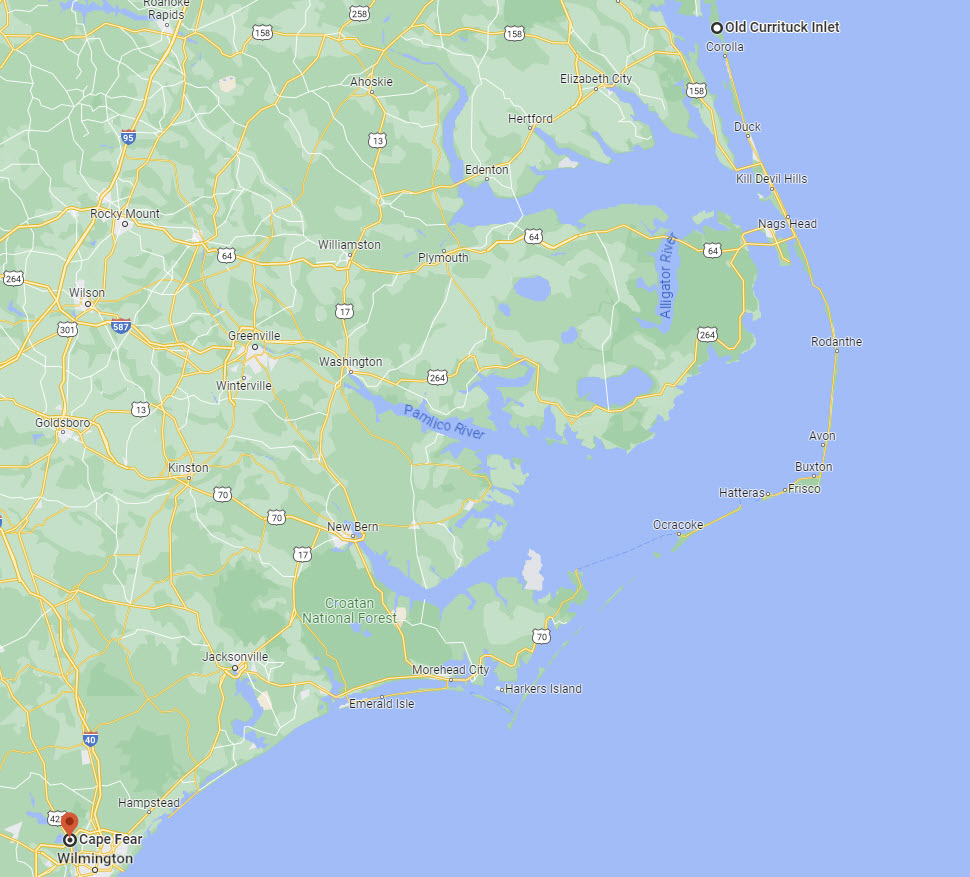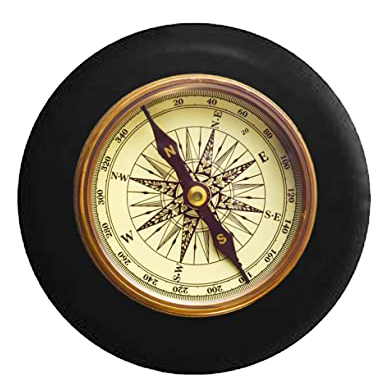 1590 Theodor de Bry Map Produced for Sir Walter Raleigh
1590 Theodor de Bry Map Produced for Sir Walter Raleigh
In the age of exploration, ships began to explore the coastal area of North Carolina. In 1524, Florentine pilot Giovanni da Verrazano sailed northwards from the Cape Fear region to Old Currituck Inlet. Verrazano, because of his uncertainty of the underwater terrain, stayed far away from the shore. Due to the distance from the shore, he really couldn't determine the makeup of the land.
 Verrazano Explored from Cape Fear to Old Currituck Inlet
Verrazano Explored from Cape Fear to Old Currituck Inlet
The next year, Spanish pilot Pedro de Quejo sailed along the Outer Banks and entered two inlets north of Cape Hatteras and a third to the south of this promontory. The names and exact locations of these historic inlets are unknown (Hoffman 1987:3-4). Later that year, Portuguese pilot Estevan Gomez sailed as far as 40 degrees north along the Atlantic Coast of North America (Dunbar 1958:7). By 1542, Spanish treasure ships regularly passed within 50 to 75 miles of Cape Hatteras and the Outer Banks before heading east towards the Azores 972 miles due west of Lisbon. Spanish pilot Angel de Vilfane searched for the Jordan River [South Carolina] circa 1561, and sailed north along the North Carolina coast until a storm off Cape Hatteras sank one of his ships and forced him to head southeast (Hoffman 1987:8). The intensity of sixteenth-century storms off the Outer Banks is confirmed by the number of ships that were lost off the North Carolina coast in the early years of exploration. Ships were reported lost near Cape Hatteras in 1528, 1545, 1551, 1553, 1559, 1561, and 1564 (Cumming 1988:44). The first Europeans to consider permanent settlement in present-day North Carolina were Englishmen. When Philip Amadas and Arthur Barlowe arrived with Ralph Lane in 1585, they found a thriving native Algonquian population that subsisted by hunting, fishing, and cultivation of a variety of foods. These English soon established a reliance on the native population for subsistence. When the Indians of Roanoke Island tired of this one-sided arrangement the former group destroyed fish weirs constructed for the English colonists and withdrew from Roanoke Island (Corbitt 1953:55).
At the time of the historic Roanoke voyages (1584-1590), there were two known inlets, Port Fernando [Hatorask Inlet] and Port Lane [closed before 1657] just north of present day Oregon Inlet. These inlets were in close proximity to one another, however, Port Fernando was considered superior and was used by English vessels to establish and supply the settlement on Roanoke Island. That inlet also served as a base for important reconnaissance operations. A slipway was built just inside the inlet to facilitate these activities (Quinn 1955:78). In 1585, Sir Richard Grenville (1542-1591) established a colony on Roanoke Island, and returned in 1586. Popular tradition relates that Tennyson’s poem “The Revenge” is based on the noblemanadventurer’s adventures. Grenville’s ship Tiger is assumed to be one of the earliest shipwrecks recorded in North Carolina. A contemporary painting thought to be Her Majesty’s Tiger flying the standards of Saint George was produced by John White in Puerto Rico during Grenville’s expedition (Hulton 1984:9; Plate 3; Figure 9). Shortly thereafter, Grenville returned to England for supplies leaving Ralph Lane in command of the colony. On 9 June 1586, Sir Francis Drake visited the settlement on his return from the Caribbean. Upon his arrival, he determined Port Fernando to be an inadequate harbor for his fleet. His vessels, therefore, were anchored well offshore. On 13 June, disaster struck when a storm hit the Outer Banks. In the ensuing chaos, several of Drake's smaller vessels were wrecked. The Colonists were disillusioned about the settlement and all but a small force decided to abandon the Roanoke Island and returned
to England with Drake (Quinn 1955:passim).
